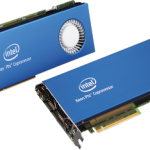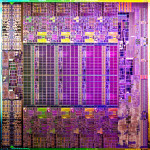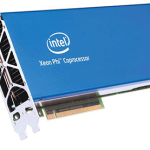“An interesting aspect to prefetching is the distance ahead of the data that is being used to prefetch more data. This is a critical parameter for success and can be defined as how many iterations ahead to issue a prefetch instruction, and can be referred to as the distance. A compiler will automatically determine the distance to prefetch, and can be determined by looking at the compiler optimization reports.”
Prefetching Data for Intel Xeon Phi
“Prefetching on a coprocessor such as the Intel Xeon Phi coprocessor can be more important than on a main CPU such as the Intel Xeon CPUs. Since the cores on the Intel Xeon Phi coprocessor are in-order, they cannot hide memory latency as compared to an out-of-order CPU. In addition, since a coprocessor does not have an L3 cache, L2 misses must then access the slower memory subsystem.”
OpenMP and OpenCL on Intel Xeon Phi
“In a heterogeneous system that combines both the Intel Xeon CPU and the Intel Xeon Phi coprocessor, there are various options available to optimize applications. Whether one has an advantage over another is somewhat dependent on the application that is being run. Comparisons can be made comparing the two methods, as long as the algorithm lends itself to run and take advantage of either OpenMP or OpenCL.”
Optimization Through Profiling
Through profiling, developers and users can get ideas on where an application’s hotspots are, in order to optimize certain sections of the code. In addition to locating where time is spent within an application, profiling tools can locate where there is little or no parallelism and a number of other factors that may affect performance. Performance tuning can help tremendously in many cases.







